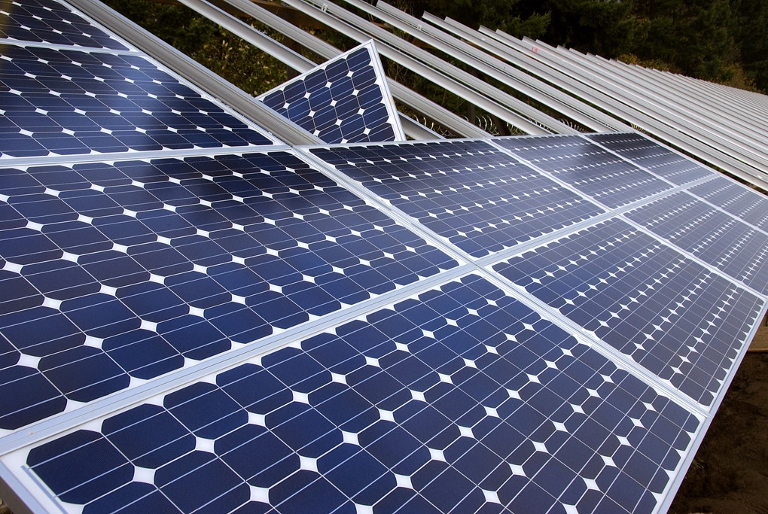I think it’s fair to say that the recent Energy Outlook from the International Energy Agency represents a significant moment in the discourse around renewable energy.
I’ve pulled this post together from several sources, but let’s start with the the IEA’s Executive Summary, which argues that there’s still a window of opportunity that can keep us to 1.5 degree warming by 2050.
Four critical actions
It involves four critical actions:
- ‘A massive additional push for clean electrification that requires a doubling of solar PV and wind deployment relative to the APS (Announced Pledges Scenario); a major expansion of other low-emissions generation, including the use of nuclear power where acceptable; a huge build-out of electricity infrastructure and all forms of system flexibility, including from hydropower; a rapid phase out of coal; and a drive to expand electricity use for transport and heating.’
This would close one-third of the current gap between the APS and the Net Zero Environment (NZE) 2050 scenario, and is the best policy lever available to policy makers.
- ‘A relentless focus on energy efficiency, together with measures to temper energy service demand through materials efficiency and behavioural change.’
Energy efficiency has been increasing by 2% a year; it needs to double in the coming decade.
- ‘A broad drive to cut methane emissions from fossil fuel operations. Rapid reductions in methane emissions are a key tool to limit near-term global warming.’
To be clear: this requires active steps to reduce methane emissions, not just reduction in fossil fuel use.
- ‘A big boost to clean energy innovation. This is another crucial gap to be filled in the 2020s, even though most of the impacts on emissions are not felt until later.’
Prototypes and demonstrators
This is probably the most contentious area, but the IEA believes that half of the technologies that contribute to emissions reductions in 2050 will come from technologies at the ‘demonstration’ or ‘prototype’ stage. That really depends on how quickly they can come through to market; energy is an area where technologies have long lifetimes, and slow turnover rates.
On the upside:
More than 40% of the actions required are cost-effective, meaning that they result in overall cost savings to consumers compared with the pathway in the APS. All countries need to do more: those with existing net zero pledges account for about half of the additional reductions, notably China.
The decline of oil
In its coverage Forbes focussed on the accelerating forecasts in the Report about the decline of oil in particular. Their projection for peak demand for oil is now 2025, a lot sooner than previous projections. The Report has a telling chart comparing the IEA’s previous projections for oil, gas, and coal demand.

The reason I say that it’s a decisive moment is that the IEA was set up to represent the interests of energy consuming nations in the wake of the oil crisis in the 1970s, and has always seemed close to fossil fuel interests.
‘When the facts change’
Carbon Commentary re-published a fascinating note written by Kingsmill Bond of Carbon Tracker—headed, ‘The IEA finally starts to believe in the energy transition’. He captured this sense of a change of direction:
In the same way as it is much more profitable to buy an unloved stock where management turns it around, the impact of the IEA’s analysis is all the more powerful because they have moved over the course of the last couple of years from supporting continuity of the fossil fuel system to embracing renewables. And why not – when the facts change, you change your mind after all.
His note captures the main points from the news conference held by the IEA to launch the 2021 report. It’s a long list, so let me just pull out a few here:
- This is the decade of disruptions. Coal demand has already peaked and oil and gas demand will likely peak by 2025. 2019 thus was the peak in fossil fuel demand, and we are bouncing along the plateau.
- There is a lot that we can do at no economic cost to reduce emissions this decade. By 6Gt extra in total. And we can deploy 800 GW of new solar and wind at no economic cost as they are cheaper than the fossil fuel alternative.
- A new geopolitics of energy will emerge as trade shifts from fossil fuels to minerals and hydrogen.
- New energy is a huge market opportunity, with demand increasing tenfold to over $1tn and a new opportunity bigger than oil today.
The whole of Kingsmill’s note is well worth reading.
This article was also published on my Just Two Things Newsletter.
Teaser Photo: Oregon Department of Transportation/flickr, CC BY 2.0





